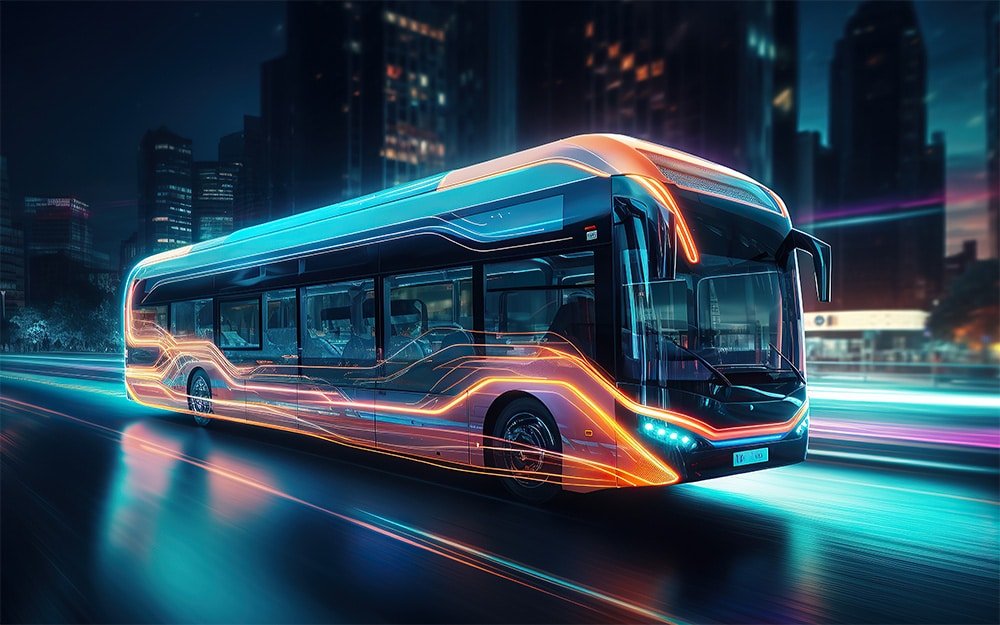Home » Innovation & Technology » Perspectives for 2024
Innovation & Technology
Perspectives for 2024
stock.adobe.com / chesky
Insights from the Commercial Operator Sector
The new year is upon us. It is common practice to look back at the past year to offer perspectives on the year ahead. While much is changing in our industry and the market, there are several common trends and observations that remain consistent from the real estate and facility management perspective.
People, Technology, and Data
While finding and retaining good personnel remains a challenge in the post-Covid world, the pressure of the labor market has led to a broader adoption and appetite for technological solutions to supplement or replace aspects of in-person operations. Additionally, the surge in available funding for electric vehicle (EV) charging and infrastructure has opened a land rush for implementation, market share, and expertise. “If you build it, they will come” is often the underlying theme—but delivery must be approached with thought, intent, and full consideration of impact on existing operations and personnel.
A result of these technological adoptions is a flood of information and raw data. Making informed and data-driven decisions is only possible when operators and owners can make sense of available data; this is often only realistic if the information is collected, collated, and presented in practical and understandable formats. Analytics and the ability to provide straightforward visibility and guidance is an active and ongoing pursuit as technologies continue to be integrated into the mobility ecosystem.
Facility Assets and Future Planning
Within the higher-education and healthcare sectors, there continues to be a significant and growing demand for parking. The most material change with facility design and function is the need to accommodate EV charging. The equipment and infrastructure required to power them can be expensive; there is a vast difference between providing Level 1 and Level 3 stations. Both existing facilities and those in design have additional operational and infrastructure considerations, and requirements vary drastically by city, region, and state.
In prior years there was much interest in designing new parking facilities so that they can be repurposed to other uses, arising from the concept that there will be fewer drivers due to autonomous vehicles. This movement has largely phased-out due to a materially higher cost. As autonomous vehicles do become more prevalent, specific areas may be dedicated to their storage with smaller parking spaces, aisles, and/or other functional design considerations, but there is not a practical need for adjusting design in the near or mid-term.
Flexibility in Operations and Driver Patterns
While the pandemic introduced remote flexibility for many employees and led to changes in how we learn, work, and approach the higher-education and healthcare sectors, the desired outcomes within both remain best provided in-person. The long-term effects of the pandemic include a significant change in the availability (lower) and cost (higher) of employees. A benefit of this pressure on the labor market is that it sped-up broader development, adoption of, and familiarity with technologies including QR codes, license-plate recognition, mobile payment, online permitting, and other customer-facing systems. Aligned with and largely enabled by these technological changes, additional flexibility is being offered to parkers, allowing hybrid and daily parking options where previously only monthly or longer-term options existed. These impacts continue grow and evolve in current operations.
Integrating Mobility Services with Core Parking Functions
Transportation Network Companies (TNCs) and micro-mobility options have been folded into systems that were not originally designed to accommodate them. In a campus environment, while TNCs can provide modest reductions in parking demand, the more significant impact is an increase in traffic due to ancillary services, namely delivery of food and goods. Curbs and pick-up and drop-off areas quickly become congested (as do surrounding roadways) dealing with traffic volumes beyond those they were designed to support. Similarly, micro mobility options are often offered without a well-defined structure of where they can be driven, dropped-off, and picked-up, leading to devices being left in parking areas and on sidewalks, without consideration for the space they are taking or hazard they can create.
In both cases, managers need to think through and identify what access should be provided, identify paths of travel, pick-up, and drop-off areas, develop protocols for operations, and work with providers to geofence the systems offered. When well-designed and managed, TNCs and micro-mobility options can provide benefit to users and owners across the entire ecosystem.
The Journey to Seamless Access
The world changed through the pandemic and systems have arisen that address management of ever more granular aspects of operations, offer more fluid ingress/egress, and create new pathways for added value. Within this context, technology should never be pursued for its own sake, but rather, should be evaluated across the full spectrum of a parking and transportation system. What solves one problem can quickly be the cause of another and tangential effects should always be considered.
The best solutions are those that can fit into or complement existing networks and systems rather than acting as a separate stand-alone answer. Effective management requires that this new complexity be embraced and incorporated into a cohesive network of solutions.
Providing seamless access is the goal. Maintaining a strategic vision while remaining flexible enough to incorporate what is new can benefit all stakeholders. Understanding the needs of the community being served, variables within the system that can be adjusted, what tools are available, and how they can be both applied and integrated can result in significant and material improvements.
The greatest impact is only provided through a continual evolution of the solutions and systems being used. The journey itself is the destination. ◆
Brett Munkel, CAPP, is VP, Higher Education and Healthcare Services for SP+ and a member of the IPMI APO Board of Directors.
-
This author does not have any more posts.


The Digital Tsunami is Here
How Data Standards are Shaping the Future of an Interconnected

Beyond Plugs
How Wireless Charging Technology is Revolutionizing Electric Public Transportation






